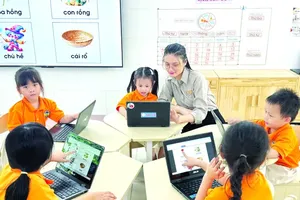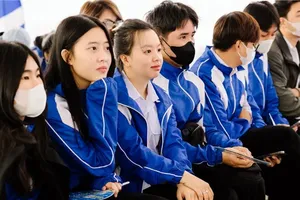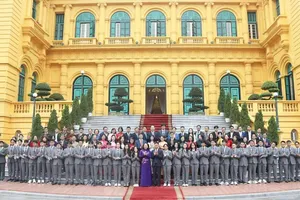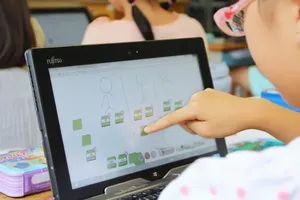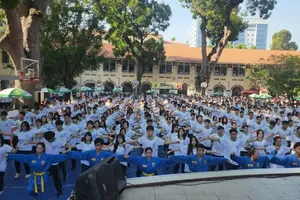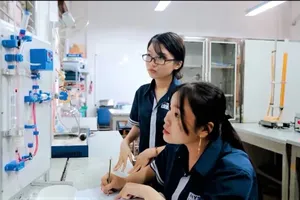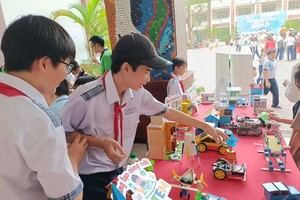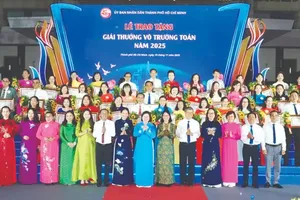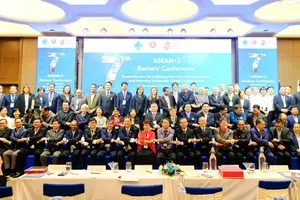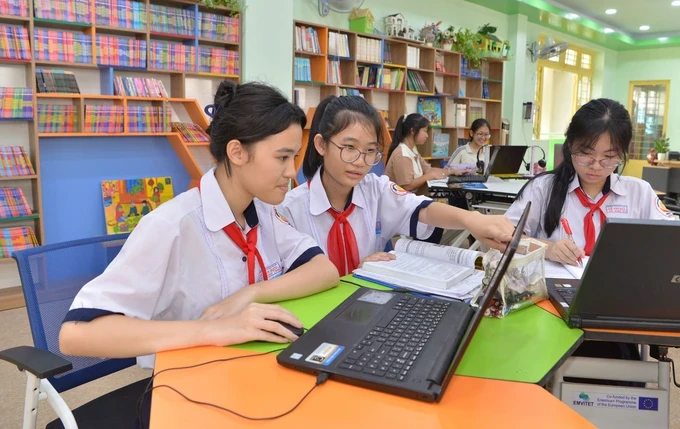
Reports from the National Assembly’s Culture and Education Committee show that the total expense to rewrite textbooks for the new General Education Program is more than VND213 trillion (US$8.74 billion), accounting for 1.46 percent of the total spending of the national budget. This consists of VND13 trillion ($533,400) from the central budget, VND152 trillion ($6.24 billion) from local budgets, VND41 trillion ($1.68 billion) from foreign sources, and VND6.4 trillion ($262,600) from social mobilization.
This educational reform in compliance with Resolution No.29 by the Party Central Committee – tenure XI, compared to those in 1950, 1956, 1979, and 2000, is more drastic, scientific, and thus attracting the participation of the whole political system, aiming at completely changing teaching and learning methods among educational institutes.
Assoc. Prof. Dr. Nguyen Thuy Hong – former Deputy Director of the Department of Teachers and Educational Managers (under the Education and Training Ministry) – commented that the most meaningful transformation is the shift from pure knowledge passing of teachers to skill and ability development among students.
To fulfill that, the new General Education Program restructures its offered subjects in all levels, with the introduction of new ones, namely Career Guidance, Education about Locality, Informatics – Technology, History – Geography, Natural Science, Arts.
Textbooks is not the sole basis for learning and testing, but now become one of the learning resources. The program is consistent from its aims, curricula, teaching methods, to evaluation forms. The innovation and activeness of both teachers and students are favored.
Logical and promising as it seems, the new General Education Program has not met its expectation. The most serious obstacle right now lies in the frustration and hesitation of teachers.
Dr. La Thi Thanh Thuy, an expert joining in developing this program, shared that any new educational program needs certain time for the staff to adapt and raise their awareness. Formerly, teachers worked rather independently; but now, seminars with their colleagues are a must in order to achieve the set targets in professional activities. This is rather new and requires much time to get used to.
Another problem comes from overcrowded classes. For the new program to display its advantages, an ideal class should have 35 students (primary level) or 45 students (secondary level). In reality, however, some classes, especially those in suburban areas, have to accommodate 55 learners, making it extremely challenging for teachers to apply new teaching methods.
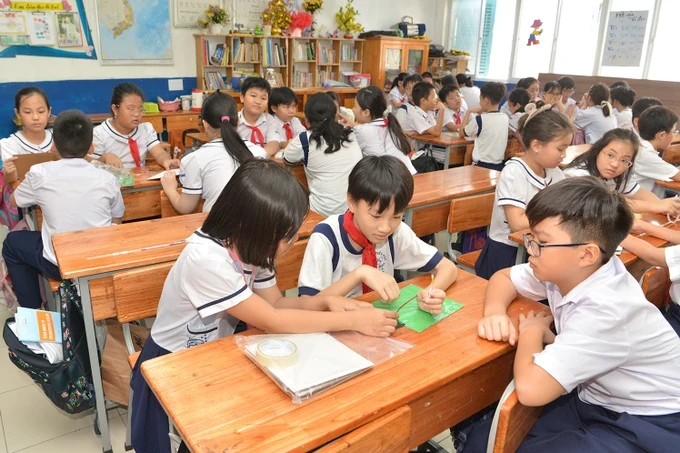
Yet another issue is teacher training to prepare for integrated subjects. According to Dr. Nguyen Thi Thu Huyen, an educational consultant for various private schools in HCMC, teachers are the first focus when upgrading teaching and evaluation methods; or else, this reform is not sustainable. Pedagogy universities at present are quite hesitant to train new teachers for those subjects.
The academic year of 2023-2024 is the fourth year implementing the new General Education Program, at all levels. Nevertheless, until now, many provinces still cannot solve the problem of hiring sufficient teachers and obtaining a human resource balance among different academic subjects. This shortage leads to serious trouble developing timetables for classes.
Director Nguyen Tan of the Education and Training Department of Thua Thien-Hue Province shared that the above issue is the most troublesome. Most teachers of both social and natural science subjects have to attend short courses to prepare for the teaching of integrated subjects, which is unproductive. That is not to mention the running of both old and new education programs makes it even tougher to arrange sensible timetables in many schools.
He proposed that the Ministry of Education and Training introduce a suitable training plan for new teachers in integrated subjects (Natural Science, History – Geography, Arts) and Career Guidance lessons to answer the demands of the General Education Program 2018. At least, in a short term, there should be a logical training roadmap so that current teachers can be confident teaching those subjects when waiting for more capable teachers-to-be in the future.
Agreeing with that, Vice Principal Le Thi Hong Dao of Di An Junior High School (in Di An City of Binh Duong Province) commented that the Natural Science subject (consisting of Physics, Chemistry, and Biology) in grade 6 and grade 7 presents basic knowledge only, so it is possible for a teacher of any sub-subject to be in charge. However, in grade 8 and grade 9 with more in-depth knowledge, many teachers, particularly older ones, do not feel confident enough to fulfill their role.
In several schools, the temporary solution is to assign teachers of each sub-subject to be responsible for the corresponding content in the curriculum. However, this is still rather troublesome. To make matter worse, educational equipment lacks to answer the needs of practice lessons in the new curricula are a frequent situation in many educational institutes. This also affects the teaching and learning quality. These are the factors leading to negative results when applying the new education program.
Article 96 of the Education Law 2019 (effective as of July 1, 2020) stipulates that “the State gives the highest priority to educational budget, in order to ensure at least an expense of 20 percent of the total spending for this purpose”.
However, in reality, the total financial allocation of state budget for education in the years of 2021, 2022, and 2023 were only 17.1 percent, 17.9 percent, and 15.8 percent, respectively. This is lower than the expected minimum level, and thus could not answer the needs of educational reform. In addition, the allocation of educational spending in some localities is still inadequate, also contributing to unsatisfactory results.
